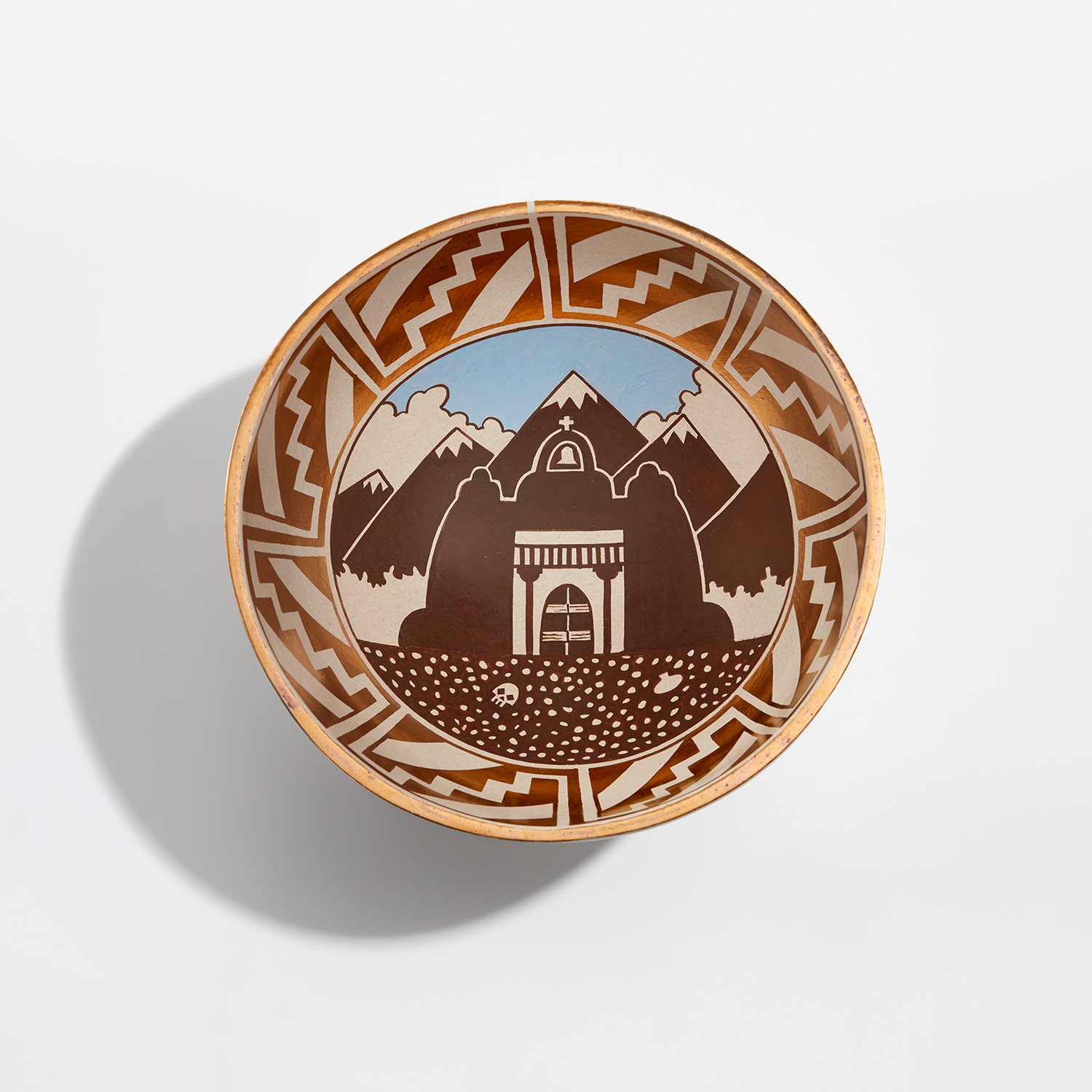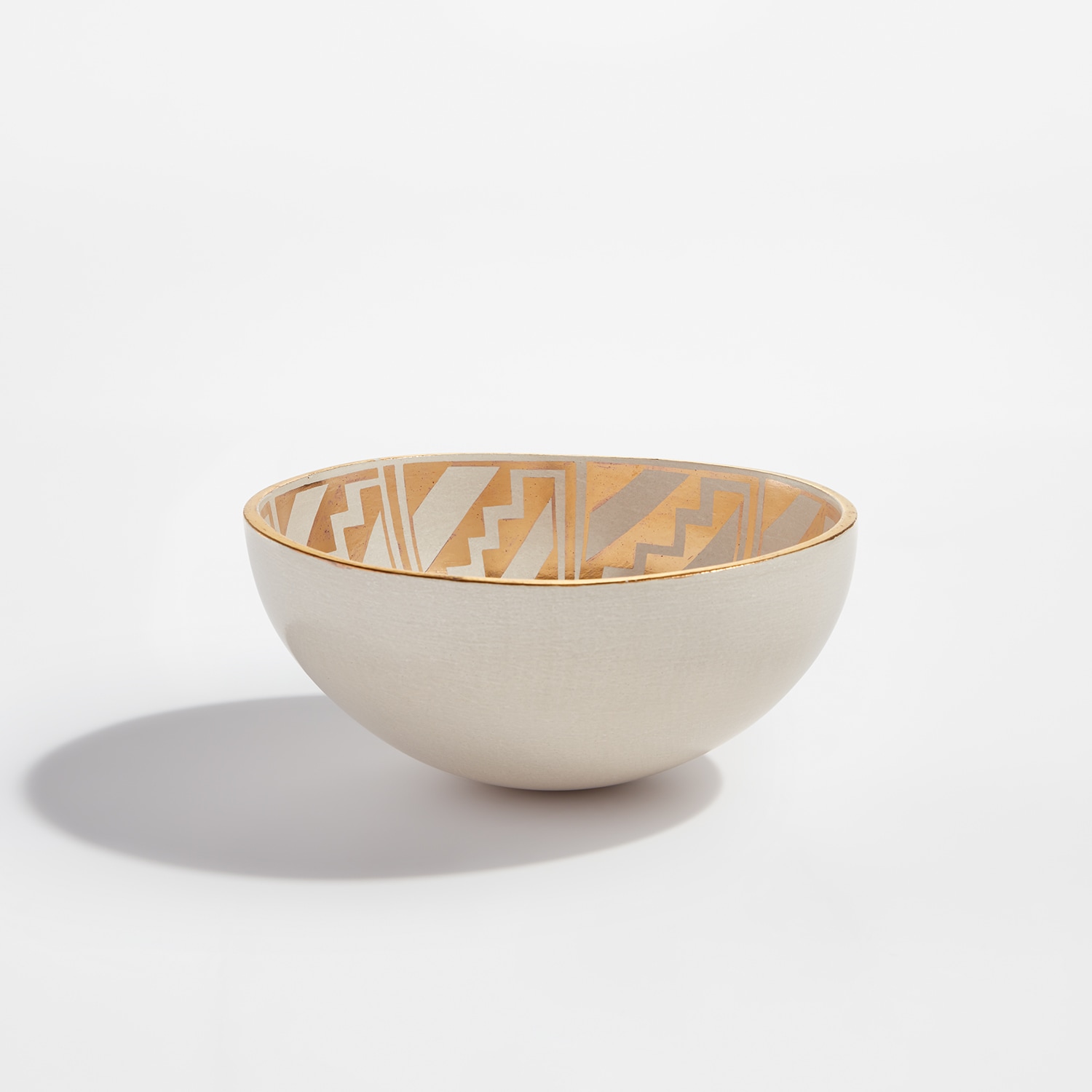



Property from a Private Collection
78
Diego Romero (Cochiti Pueblo)
"Untitled Landscape" bowl
2003
Painted and gold leaf-applied earthenware.
3 7/8 in. (9.8 cm) high, 8 1/4 in. (21 cm) diameter
Exterior of rim painted CHONGO MADE AND PAINTED ME and "UNTITLED LANDSCAPE".